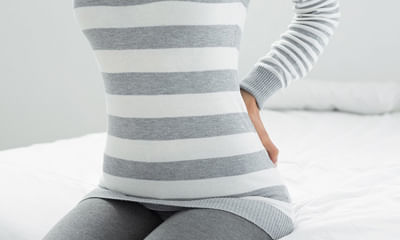Learn About Posture and Back Pain
Poor posture while sitting, standing, lying down or moving around is a major cause for back pain. Sitting and standing for long time put considerable pressure on the lower back in fact, standing exerts up to five times more pressure than lying down, and sitting is even more strenuous.
Learn about the importance of good posture
Good posture can help prevent back pain, neck pain, muscle and ligament strains, compressed nerves and other injuries. It also has a number of other positive health effects and can be beneficial physically, mentally and emotionally. Good posture improves your appearance and helps you project self-confidence.
Recognize the symptoms of bad posture
Signs and symptoms of poor posture include slumped or rounded shoulders, protruding abdomen, excessive curve in the lower back (swayback) as well as back and neck pain and headaches. Problems in the neck is one of the major cause of headaches.
Maintain a healthy weight
Carrying excess weight can put extra strain on your back and abdominal muscles and lead to bad posture. Walking is one of the best ways to improve posture and lose weight.
Choose a firm mattress to support your spine
Try to avoid sleeping on your stomach the best sleeping position for your back is on your side with your knees bent. Make sure your pillow supports your neck in a straight position to prevent neck pain and sore muscles. Your mattress should not be too soft and too hard. Best is 40 density foam mattress.
Avoid wearing high heels and platform shoes
Make sure your shoes fit properly and offer good support especially when you're on your feet a lot during the day and when you're exercising. High heels throw your back out of line and adversely affect posture. They should be worn only for short periods of time, if at all.
Minimize stress on your lower back
Don't stand too long in one position. Rest one foot on a low stool or another stable object and frequently shift your weight from one leg to another. To relax, bend from your waist and let your head, neck, shoulders and arms hang down briefly.
Learn about sitting, posture and back pain
Extra pressure exerted on the back when sitting comes from the upper body shifting forward, forcing the back muscles to strain to hold you upright. Slouching increases pressure on your lower back 10 to 15 times more than lying down.
Choose a chair that firmly supports your lower back
For long periods of sitting, choose a straight chair without heavy padding. The chair should fit under your desk or table so that you maintain your upright posture. Armrests are helpful to support some of your weight, especially when shifting position.
Sit firmly back in your chair
Keep your shoulders against the chair back, your chest lifted, and your upper back straight. A rolled up towel or small lumbar pillow can provide extra support. When working at a desk, bring your chair close enough that you needn't lean over. Your feet should touch the floor comfortably.
Make adjustments while you work
If you're typing or working at a computer, make sure that all of your work is at a comfortable level. Looking up or down for long periods of time can put stress on your neck, shoulders and upper back muscles. If possible, get up, stretch and move around often.
Use proper techniques when lifting
Good posture is important—not only when sitting, standing or lying down, but also when moving and lifting whether at home or on the job. It's important to maintain good posture and lift with your legs and arms to reduce your risk for back pain.
Learn how to maintain good posture while driving
When driving, position your seat so that you can easily reach the steering wheel, brake and accelerator. If possible, try to adjust your knees slightly higher than your hips. On long drives, change your seat position occasionally and stop every couple of hours to stretch and walk around. Avoid slumping or sitting in a twisted position for example, with your elbow resting heavily on the windowsill. If your seat doesn't provide enough support, try a seat pad, rolled up towel or lumbar roll. Reposition your hands on the wheel frequently to reduce upper back and neck strain.
Know when to contact spine and pain specialist
If your back or neck pain worsens or becomes chronic in spite of home remedies to improve your posture, seek medical attention. Your doctor, on examination and depending on severity, may recommend diagnostic tests like x ray or mri. Physiotherapy and exercises should only be performed on advise of your doctor. You may ask your physiotherapist to discuss with your doctor.



+1.svg)
